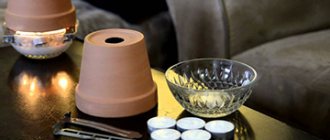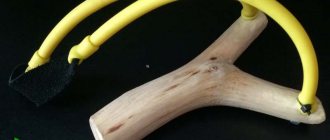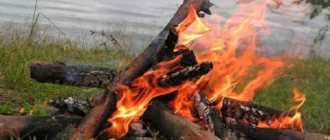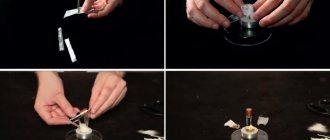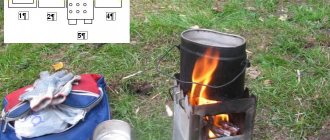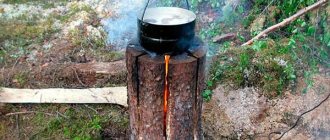Dry alcohol: composition
The composition of this chemical compound may vary. It all depends on the substances that were used in production. Don't think that it's just dry alcohol. Today, however, there is only one composition that is most common; in fact, it is this one that is most often found on the territory of Russia.
Dry alcohol consists of tablets of compressed methenamine along with paraffin. The latter is limited to very small quantities, since it only serves to give the tablet a certain shape. In addition, paraffin retains its original shape intact regardless of the temperature, that is, when burning, pieces will not fall off from it. At least they shouldn't.
The second type of such fuel is metaldehyde. It is a four-unit polymer.
And finally, there is a third type of tablet - calcium acetate solvate. It differs from others only in that it forms ash during the combustion process, which its analogues do not do.
Dry fuel. Compound
The chemical basis of dry alcohol is represented by methenamine. This dry fuel was first obtained by Butlerov in 1860, as a result of studying the interaction of formaldehyde with ammonia solution. As a result of his experiments, colorless crystals were obtained, which were given the name hexamine. This substance itself and its compounds with calcium chloride turned out to be good anti-inflammatory and diuretic agents, which can still be found in the pharmacy. The second excellent property of this compound was its ability to burn without producing ash. Dry fuel in tablets, sold in stores, consists of methenamine with a small amount of paraffin. This type of “dry alcohol” is very convenient to use. Hexamine itself is a very flammable substance. When dry, it ignites very quickly from an ordinary match. And it goes out easily, as soon as you cover it with something. Even when damp, methenamine can ignite, but at the same time it crackles and scatters sparks. Despite the fact that “dry alcohol” can be quite easily purchased at any hardware store, a small amount of it can also be prepared at home.
Dry alcohol: application
These tablets can be used in different ways. The options differ in their sophistication, specificity, or simply popularity. So there will be more than one answer to the question of how to use dry alcohol tablets. The most common procedure is lighting a fire for cooking. In tourist and military kits you can often find dry alcohol tablets, which come complete with a metal stand of the same size.
In addition, such dry fuel is used to launch aerial lanterns. The advantages of using tablets or cubes are obvious: a lot of heat and heat, a fairly long burning time. In addition, there are no sparks that can damage the shell of the ball.
There is a third application that is not so common. Dry alcohol is used as fuel for model steam engines. Only a few enthusiastic people and collectors know about this use case, but this method cannot be excluded from the list either.
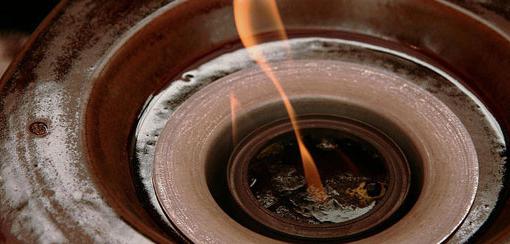
In addition, fuel can be used for other purposes, that is, the manufacturer is no longer responsible for the result of your actions. For example, dry alcohol was often used as an inhibitor to remove traces of corrosion on steel parts with hydrochloric acid. This was done in Soviet times, but even now you can find such a strange way of using it.
Advantages and disadvantages
Dry fuel tablets are a simple, lightweight, compact, powerful source of heat. Subject to storage conditions, they have an unlimited shelf life. Due to the fact that it is difficult to regulate the power of the flame, it is more often used for heating than for cooking food. Dry fuel flames are sensitive to wind, so a simple screen may be necessary. Dry fuel is more expensive and less common than other fuels such as ethanol or gasoline.
The specific calorific value of dry fuel is about 31,300 kJ/kg.
Disadvantages of dry fuel
To be honest, there are also disadvantages, and their presence is not difficult to explain:
- You will not be able to control the height and strength of the flame - set it on fire once, and then whatever happens!
- Cooking food over such a fire is quite problematic, mainly due to the first reason. You can still warm it up, but only in the field, when there is simply nothing else at hand.
- The flame from such fuel is extremely sensitive to atmospheric phenomena such as wind, so at least a simple screen is definitely needed.
- You can’t buy dry alcohol everywhere – it’s not such a common fuel.
- The purchase will cost you a significant amount, at least if you do not take one or two tablets.
Complete set of burner
This type of burner is widely used not only for tourism purposes. They are part of the soldier's equipment, the pilot's survival kit and the victims of disaster. The complete set of the burner includes a taganok, a metal container, solid fuel and matches. This set weighs only 300-350 grams, so its presence in a backpack is not burdensome.
When using dry fuel, the good thing is that you can use some metal products on hand as a taganka, such as a tin can, a metal mug, an aluminum or tin plate. It will be convenient to place a heated container on them.
Some burner sets from different manufacturers have one drawback in common - the lack of a cover. It is indispensable when boiling water using dry fuel. In a closed container, water boils much faster, which saves “dry alcohol”, which may be the only source of a full-fledged fire. The lid will also keep the water warm for a longer time.
If there is a need to boil more than half a liter of water, it is best to use 2 tablets of fuel at the same time. In this case, the water will boil 2 times faster than if you add fuel alternately.
If you need to use dry fuel, you should check its suitability in advance. To do this, you need to burn one sample from the package. If the fuel is dry, then after complete combustion there should be a small piece of ash left. In this case, the “dry alcohol” is considered suitable for further use. If, after complete combustion, a large amount of ash remains, resembling a sponge in structure, then such fuel must be thrown away. Using it to cook or heat food is dangerous because it may contain toxic substances.
Only experienced hikers can understand that there is nothing more pleasant after a long and tiring trek than washing with clean water and relaxing with a mug of freshly brewed tea.
Dry fuel, or as it is sometimes called “dry alcohol,” was created back in the 19th century. And what’s interesting is that it is still a fairly popular type of fuel for tourists, lovers of “forays” into nature, summer residents, fishermen, mushroom pickers, and hunters. Even professional climbers, travelers and other extreme sports enthusiasts of various calibers actively use this fuel. Apparently, nothing better has yet been invented if dry fuel in the form of compressed tablets, consisting, as a rule, of methenamine and a small amount of paraffin, is supplied to individual rations in the armies of many countries around the world.
Yes, now there are a variety of camping gas burners on sale, devices that use gasoline, alcohol and other high-calorie combustible materials. But, despite their obvious advantages over dry fuel, a “pocket stove” in the form of “dry alcohol” is a super-budget option for lighting a fire from raw wood or heating food and drinks. After all, think about how to quickly boil a mug of water in the field, when there is neither fuel nor a stove at hand? This is where a few tablets of dry fuel, which you have prudently hidden in the far pocket of your jacket or backpack, will help solve this problem.
There is probably no point in comparing hexamine tablets with gas, gasoline, alcohol, kerosene or wood chips. Everything has an optimal scope of application, its pros and cons. Practice has shown that dry fuel works well if it is used by one or two or three people at the same time. Otherwise, it is better to use something else.
Toxicity of dry alcohol
These tablets themselves are absolutely safe. Naturally, otherwise they simply would not have been released onto the market. However, like any other chemical, some compounds can become truly dangerous to humans. That is, not during combustion, but upon contact with a specific environment.
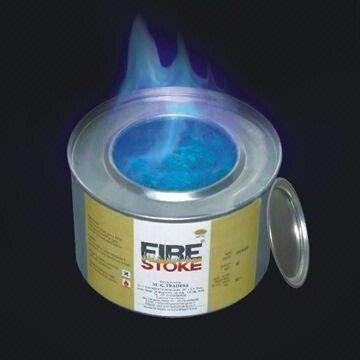
So, for example, when dry alcohol containing hexamethylenetetramine comes into contact with an acidic environment, the output will be formaldehyde. This substance is extremely toxic. In addition, if such a substance is set on fire, then you are also at risk of ammonia fumes, nitrogen oxide, and hydrogen cyanide. All these compounds are extremely dangerous, especially if ingested - damage to the stomach and kidneys is almost guaranteed in this case. If the tablets are made with metaldehyde, the problems may be the same.
It is also important for you to keep in mind that if an animal or child swallows such a tablet, this will certainly lead to poisoning, which may still be hidden - the tablet will simply stick to the wall of the stomach and will dissolve gradually. Finding out the cause of such poisoning is quite difficult, which will make treatment even more difficult.
Dry fuel - crazy hands
Making dry alcohol with your own hands is quite possible. Even a person who is as far from chemistry as possible in any of its manifestations can do this. Strictly speaking, the process will require virtually no effort from you, although some components for such tablets will be quite difficult to obtain and, perhaps, even very expensive. However, it is possible to give such dry fuel almost any shape - it all depends on your imagination.
Industrially produced dry fuel has virtually no advantages over its homemade counterpart. So it all depends on your desire to learn something new and keep your hands busy on days free from other things.
Chemical components of the product
In order to make your own dry alcohol at home, you, as mentioned earlier, will need a certain amount of different chemical components. It all depends on which recipe you choose. The easiest way would be to divide them into options. So, the first composition:
- Formalin.
- Ammonia solution.
- Paraffin.
Second manufacturing option:
- Acetaldehyde.
- Sulfuric acid.
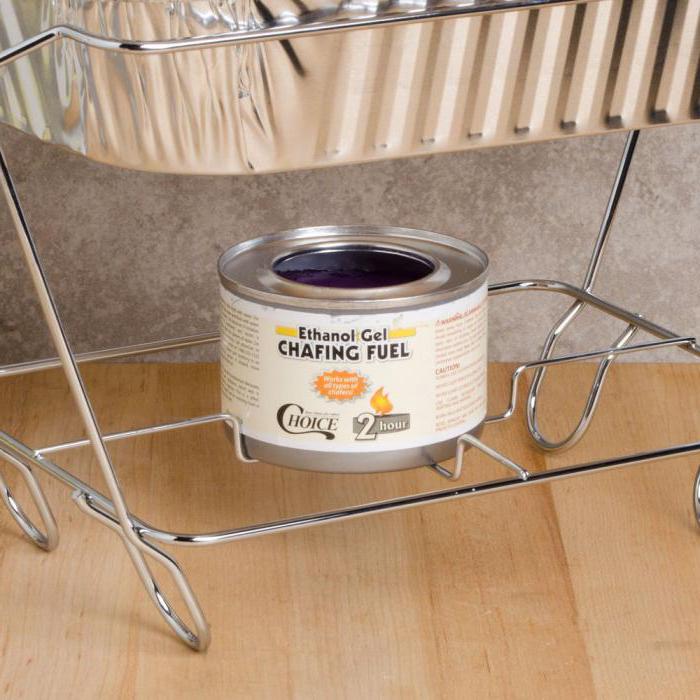
Third line-up:
- Ethanol.
- Calcium acetate.
Dry alcohol recipe
The first of the proposed recipes is quite dangerous, since the materials that are used in this case cannot be inhaled. And in general, it would be better to carefully protect yourself from contact with the skin, and even more so on the mucous membranes.

The first step here is this: a small enamel container filled with cool water is placed on the work surface. You need to add one hundred milliliters of formalin there - a forty percent methanal solution is perfect.
The next step is to add ammonia solution to the resulting chemical mixture. One liter of it is needed, more precisely, a twenty-five percent ammonia solution needs four hundred and forty-five milliliters, and up to a liter the total volume is supplemented with water.
It is these two procedures that need to be carried out outdoors, since vapors of both ammonia and methanal can cause serious problems if they enter the human body.
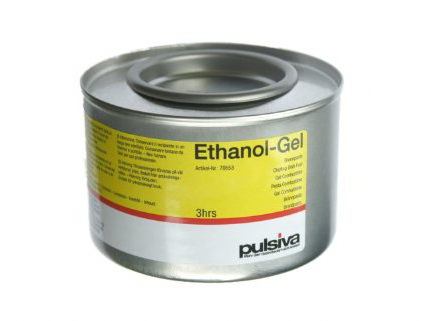
The third step is to evaporate the liquid - you need to achieve crystallization of methenamine. After this is done, you need to filter the resulting crystals and then squeeze them out. Regular toilet paper will help with the latter - you can also use filter paper, but this is not critical.
The last step consists of adding one to three percent paraffin, grinding the resulting mixture and molding the resulting composition into real briquettes. Here is one of the answers to the question of how to make dry alcohol.
Formalin+ammonia

To do this, you will need to pour 100 ml of formaldehyde (40% solution) into a metal container immersed 2/3 in cold water. Then gradually add 1 liter of ammonia (12% solution), stirring constantly. These manipulations should be carried out outdoors, since inhaling the vapors of these substances is harmful to health. The resulting solution should be covered with a lid and left for a day. Then the mixture should be heated and evaporated until hexamine crystals begin to precipitate. After which the mixture must be cooled, and the methenamine filtered and dried. Then, mixed with 1-3% paraffin, grind and form dense briquettes. The prepared dry alcohol should be stored in a place protected from moisture.
DIY metaldehyde
This type of dry fuel, such as metaldehyde, can also be prepared at home. What you need has been described above. So let's go straight to the workflow.
First of all, you need to dilute the acetaldehyde poured into a container (it can be characterized as follows: dull, volatile water with a characteristic unpleasant odor) with sulfuric acid diluted in a one-to-one ratio.
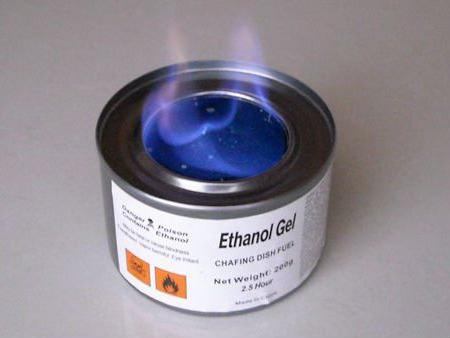
In fact, this is the whole process. If you did everything correctly, the acetaldehyde will be converted into hard metaldehyde, which is suitable for cutting flammable bars from it into the desired shape and size.
It seems that it would be superfluous to remind about caution - you need to be extremely careful with sulfuric acid.
DIY dry fuel
DIY dry fuel
Although chemists know alcohols that are not watery, but solid (for example, tertiary butyl alcohol, pentaerythritol, cetyl alcohol and others), “ dry alcohol
"has nothing to do with real alcohols.
More precisely, there would be another name for it - dry fuel
. But the “wrong” name stuck. Dry alcohol refers to a variety of substances that burn with an almost dim flame without smoke or soot, like ethyl or methyl alcohol, and when burned, do not leave the slightest trace of ash.
Hexamine - the very first dry fuel - was obtained in 1860 by the Russian organic chemist Alexander Mikhailovich Butlerov
(1828-1886), studying the interaction of methanal with the aqueous substance of ammonia. As a result of the reaction, dull crystals of the composition (CH2)6N4 were formed. This substance was called hexamethylenetetramine, or hexatropine. Both methenamine itself and its combination with calcium chloride (calcex) turned out to be quite good anti-inflammatory and diuretic agents, and therefore they can currently be purchased at any pharmacy.
Do-it-yourself dry fuel, dry alcohol, solid biofuel, Alexander Mikhailovich Butlerov, dry fuel at home
Another remarkable property of methenamine is the ability to burn without the formation of ash. Pills or briquettes of purchased dry fuel consist specifically of methenamine with a small addition of paraffin. This fuel is very convenient to use: it simply ignites with a match, it simply goes out, you just need to cover the flame with a cap or cup. Its only drawback is that, when damp, it begins to burn, cracking and scattering sparks. Although dry fuel can almost always be purchased at a hardware store or where they sell camping equipment, you can also make it in small quantities at home.
DIY dry fuel
This is done like this: place a small enamel pan in a bowl of cool water (it is better if the water is running) and pour in 100 ml of formalin (40% methanal solution), and then add in small portions while mixing 1 liter of ammonia solution (445 ml of 25% the solution is previously diluted with 555 ml of water). It is better to carry out these operations outdoors, since inhaling both methanal and ammonia is harmful. Later, cover the pan with a lid and leave it in a cool place until the next day. Then the contents of the pan are evaporated in a water bath, achieving crystallization of hexamine. Later, the pan is cooled, the crystals are filtered, squeezed between sheets of filter paper or just toilet paper and dried in air. 1-3% paraffin is added to dry hexamine, the mixture is ground in a mortar and briquettes are pressed from it. Prepared dry fuel should be stored away from water.
The combustion products of hexamine (carbon dioxide, nitrogen, water vapor) are gaseous, and no ash remains. Metaldehyde is the second type of “dry alcohol”. This tetramer (four-unit polymer) of acetaldehyde has the formula (CH3CHO)4. If you add a few drops of sulfuric acid diluted (1:1) with water to acetaldehyde - dull volatile water with a corresponding odor, cooled below 0 oC, then acetaldehyde is converted into flammable hard metaldehyde, insoluble in water and ethyl alcohol. Cubes, sticks, and pills are cut out of it, which simply light up with a match. When burned, metaldehyde does not form ash, because all the products of its interaction with atmospheric oxygen are carbon dioxide and water vapor.
dry fuel at home
Another type of “dry alcohol” is calcium acetate solvate. If you quickly pour 10 ml of a concentrated aqueous solution of calcium acetate into 170 ml of ethyl alcohol, the mixture almost instantly hardens into a translucent mass similar to snow-white soap. From such a mass you can cut cubes that, when ignited, glow perfectly. When burned, calcium acetate solvate decomposes to form a small amount of ash (calcium carbonate) and acetone, which, like ethyl alcohol, burns well.
Source: www.gradremstroy.ru
Solid biofuel, dry alcohol, Alexander Mikhailovich Butlerov, dry fuel at home, dry fuel in tablets, traditional fuel
DIY dry fuel
Combustible "soap"
The next type of dry fuel that can be prepared is calcium acetate solvate. There is nothing complicated in this recipe - it is the simplest of all those given in the article. You just need to get a little ethyl alcohol - two hundred grams, or rather one hundred and seventy, is enough for the recipe, and pour it into a metal container. After which ten milliliters of calcium acetate is added (it can be purchased in the form of a concentrated aqueous solution, and the required amount for this particular substance is indicated here). After this, the liquid will instantly harden, turning into a translucent whitish soap.
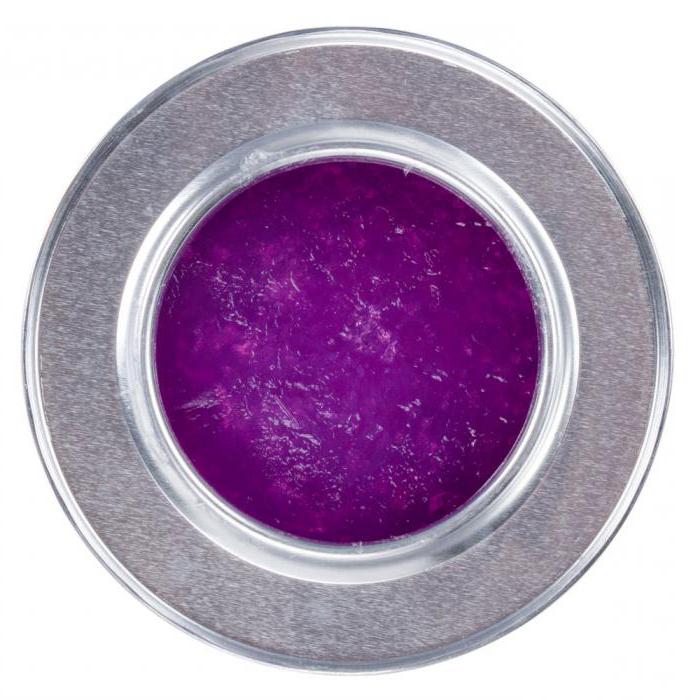
That's all, actually. All you have to do is cut cubes, tablets or flammable bars of any other shape from it.
